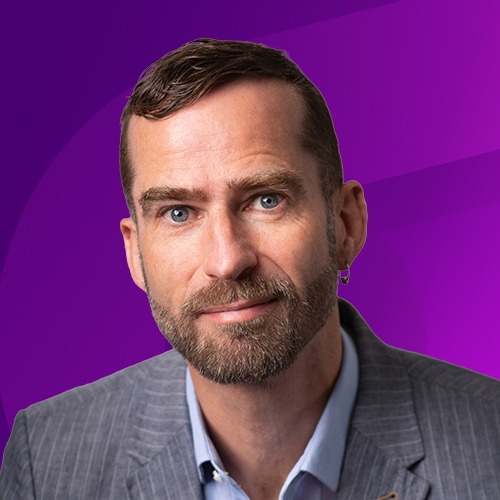As the business landscape continues to rapidly evolve, organizations are realizing the necessity of implementing a robust Risk and Resilience strategy. To showcase exemplary resilience during a time of unprecedented disruption, iluminr has created the Gamechangers in Resilience interview series, featuring leaders all over the world who have helped their organizations and clients demonstrate exceptional adaptability.
Terri Probert is a true powerhouse in the realm of business continuity at Teachers Mutual Bank Limited, with a multifaceted background spanning IT operations, technology risks, and operational risk and compliance. At the forefront of her specialized focus on Business Continuity, Terri combines her deep understanding of IT intricacies with a talent for cross-functional collaboration, effortlessly navigating the diverse challenges faced by organizations. Terri also sits on the management committee of the All-Finance Forum – an industry forum for APRA-regulated companies with a focus on Business Continuity and Disaster Recovery.

How did you get started in business continuity and operational resilience?
My journey began unexpectedly in IT operations, gaining expertise in system recovery and sparking an interest in business continuity. Progressing in my career, I focused on technology risks and collaboration with departments like Finance. Specializing in Business Continuity Management (BCM), I developed a well-rounded understanding of the field.
What’s the most important factor in building a resilient and adaptive culture within an organization?
Securing senior leadership buy-in and fostering strong relationships. When leaders actively engage in crisis management efforts, it sets the tone from the top and allows for effective decision-making. However, it’s also important to strike a balance by empowering operational teams to handle day-to-day tasks, while strategic decision-makers focus on the bigger picture.
What are you currently working on?
I’m focused on implementing CPS 230, an operational risk management standard in Australia, and discussing how it will impact our organization’s resilience efforts. This is a significant undertaking which combines operational risk, business continuity, and third-party vendor management into one cohesive framework.
This implementation will bring about substantial changes in how we approach business continuity and operational resilience for Australian firms.
This shift will involve establishing disruption thresholds, testing plausible scenarios, and obtaining board approval. Undoubtedly, it will require a considerable amount of work in the coming months to ensure a smooth and successful implementation of CPS 230.
How will CPS 230 impact day-to-day operations and collaboration in your organization?
CPS 230 will revolutionise our operations, breaking down barriers and fostering collaboration across departments. It will provide a holistic perspective, identifying dependencies and streamlining processes for uninterrupted service delivery.
How do you balance meeting regulatory requirements with fostering innovation and growth?
We prioritize compliance without unnecessary complexity, removing legacy processes and leveraging technology for efficiency. This allows us to allocate resources towards driving innovation and growth. By striking this balance, we can continue to meet regulatory requirements while cultivating an environment that encourages creativity, forward-thinking, and the pursuit of new opportunities.
Ultimately, our commitment to both regulatory compliance and innovation positions us as a trusted financial institution that not only meets the highest standards but also adapts to the evolving needs of our members and the industry.
What are the biggest challenges in risk management and resilience, and how can organizations proactively prepare?
The evolving nature of risks poses a challenge. Organizations should engage in horizon scanning, have robust controls in place, conduct exercises, and embrace emerging technologies responsibly.
Being prepared means having a clear plan in place and ensuring that employees understand their roles and responsibilities in executing that plan. Conducting exercises and microsimulations can help enhance preparedness and readiness for potential events.
Additionally, the emergence of AI poses both risks and opportunities. While it offers great potential, it also demands a governance framework and proper controls to ensure responsible and effective use. Organizations should explore how AI can be leveraged to manage and maintain resilience, as it has the potential to transform how we work and utilise data.
How have you leveraged technology and data analytics in business continuity and resilience planning?
We are utilising tools like iluminr and are currently upgrading our legacy systems to integrate various data sources in preparation for CPS 230. We are in the process of evaluating new systems to better manage our business continuity needs, with a focus on integrating data from across the business. By connecting these data sources, we will have a comprehensive view of interconnected information, enabling efficient crisis management.
How have you collaborated with external stakeholders to promote best practices in business resilience?
Engaging with other organizations through forums and industry associations like the Business Continuity Institute (BCI) has been immensely beneficial. These platforms facilitate discussions on various aspects of resilience and continuity planning, enabling us to share experiences, learn from each other’s practices, and discover innovative solutions. We exchange insights on topics like backup solutions, BC tools, and the approach to address regulatory requirements like CPS 230. The collaborative spirit within these communities is exceptional.
What strategies can businesses implement to manage unforeseen events and enhance future preparedness?
Constantly staying informed, having clear plans, understanding roles, conducting exercises, and exploring emerging technologies are strategies to manage unforeseen events. The aim is continuous improvement and being better prepared for whatever comes our way.
Are there any mentors or influential figures who shaped your approach to business continuity and resilience?
Influences from past experiences, colleagues, and leaders have shaped my approach, highlighting the importance of relationships, collaborative workshops, and prioritising people’s well-being.
What advice do you have for those starting their career in business continuity and resilience?
Focus on building relationships, seek certification, have confidence in yourself, learn from others, and develop stress management strategies. With these qualities and practices, you’ll be well-equipped to succeed in the field of business continuity and resilience.
What’s your leadership playbook in real-time?
Becoming a values-based leader in real-time. Working for a values-driven organization, I prioritise walking the talk by embodying openness, honesty, and integrity in my actions and words.
Building strong relationships and recognizing that I don’t need to have all the answers, but rather know the right people to seek guidance from, is essential.
I believe in empowering others to step up, learn, and grow, embracing mistakes as valuable learning opportunities. Curiosity drives my approach, while compassion and empathy for others play a central role. Ultimately, I aim to encourage individuals to reach their highest potential and be their best selves.
How do you apply the lessons of Resilience in your own life?
I prioritise my mental health and well-being by taking responsibility for it and seeking support from coaches and trusted individuals. I create moments for reflection and recharge, understanding that I can’t effectively help others if I’m not taking care of myself. Asking for help when needed and surrounding myself with a supportive network are essential. Moreover, I focus on differentiating between what’s within my control and what’s not. I channel my energy towards what I can influence, viewing setbacks as opportunities to learn and grow. Embracing this perspective allows me to persevere and view failures as stepping-stones towards achieving success.
There is no such thing as a mistake, only a lesson. Every stumble is not a fall, and every failure is just another step on the path to success.














